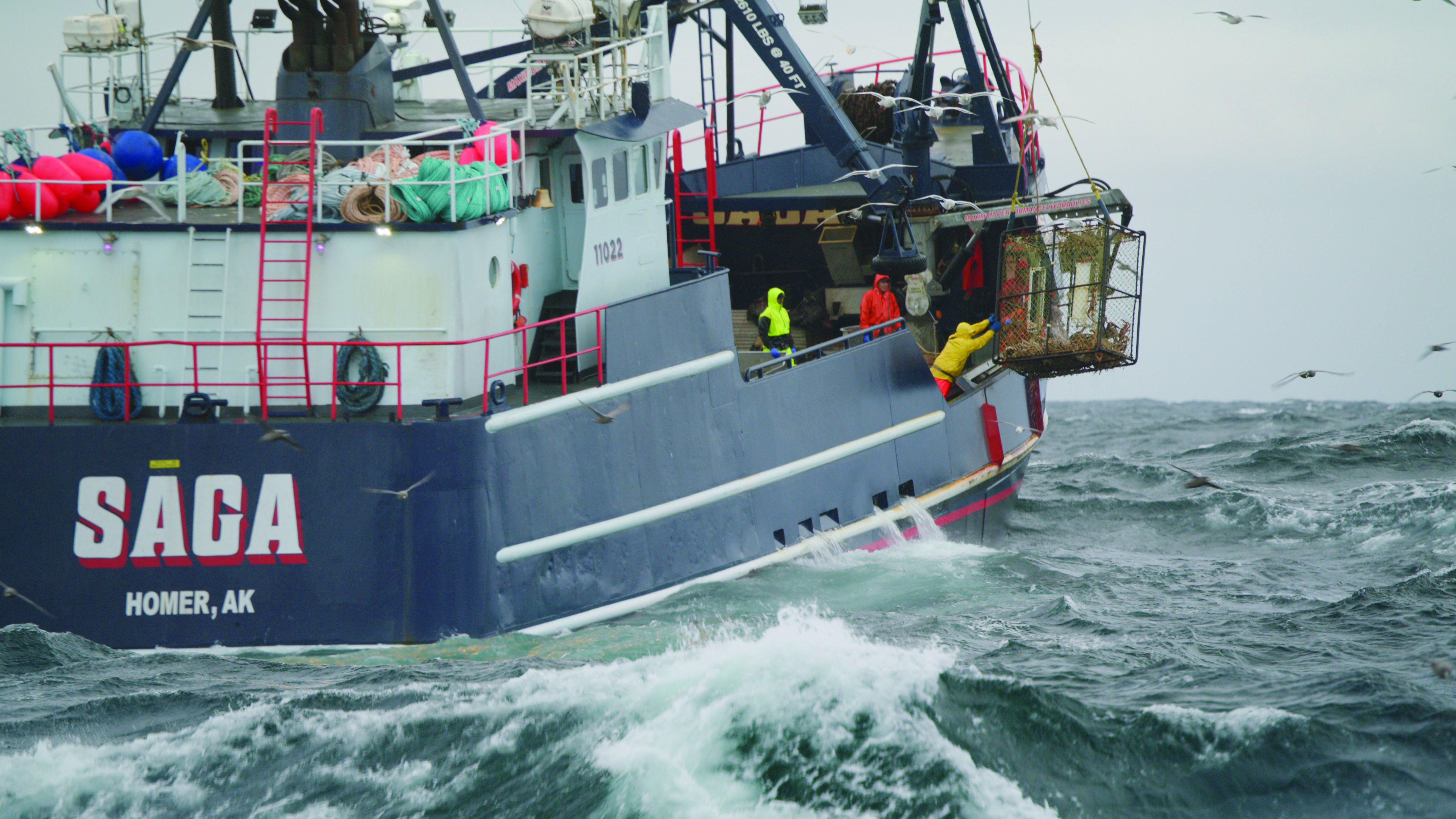Taking Television Into the Clouds

While most awards are given for past achievements, one of the 71st annual Technology & Engineering Emmy Awards winners offers a glimpse into what some networks believe will be the future of how TV companies will operate in the 2020s and beyond.
The award for “pioneering public cloud-based linear media supply chains” will be given out by the National Academy of Television Arts & Sciences to Discovery, Fox Networks Engineering & Operations (the Fox NEO teams that are now part of Walt Disney Television), Amazon Web Services, Evertz and SDVI. (The awards ceremony, originally set for April 19 in Las Vegas, has been postponed along with the NAB Show.)
The impact of the work to be recognized goes far beyond a few networks and vendors, and demonstrates how some TV programmers are embracing new technologies to reinvent the whole idea of how video is created, processed and distributed.
“When we started on this project, we wanted to really reimagine how we approach all aspects of the business because we knew we were at this tech inflection point,” Discovery executive VP of technology strategy and architecture Brinton Miller said. “We knew we were a few years out from what we are now calling the streaming wars. We knew that there was going to be this paradigm shift in the day-to-day business and that the volume of content we were going to be putting on all of these screens was just going to go up and up and up.”
Coping with the content explosion needed for the streaming wars wasn’t possible with traditional TV technologies, though. To handle that, “we needed a fundamental shift in our operations,” explained Chris Blandy, now executive VP of technology solutions at Walt Disney Television, who led the technology teams at Fox NEO prior to Disney’s acquisition of 21st Century Fox. “The vendor ecosystem [and the infrastructures used by TV networks] had to change so we could have much more flexible operations in the future.”
A ‘Fundamental Shift’

To address that issue, Blandy said, Fox NEO began exploring cloud technologies. Fox invested in SVDI in 2016 — Discovery is another investor in the media supply-chain management platform — and began working with Amazon Web Services to develop a cloud-based system to move all of its workflows for automatically ingesting, transcoding and checking the quality of content into the cloud. By the end of 2018, Fox NEO reached a point at which all programs, promos and commercials were flowing through a new cloud-based system.
The smarter way to stay on top of broadcasting and cable industry. Sign up below
Discovery went even further. Starting in 2015, the company began working on an inbound, cloud-based supply chain system that would allow producers to send all of their content to AWS cloud services to be automatically processed and prepared for distribution. In the second stage, it worked with Evertz for a cloud-based playout system that could send all their traditional channels, VOD content and streaming feeds out to MVPDs, streaming partners and consumers. Finally, Discovery moved post production and the middle stage of the content supply chain to AWS, for a complete, end-to-end system in the cloud.
Three vendors played a key role in those efforts. SDVI president and CEO Larry Kaplan noted they provided the two network groups with “a platform that manages the resources, the third-party applications that they need to support their supply chains. … You can think of it as a kind of factory floor in a virtualized facility, a kind of manufacturing plant in the sky.”
For Discovery’s cloud-based efforts, Evertz provided “a cloud-hosted automation system along with a feature-rich playout entity,” said Dan Turow, VP of file-based solutions at Evertz.
In addition to providing the cloud services for the project, AWS embarked on an extensive effort to upgrade and adapt its cloud-based service to the needs of media companies and worked closely with SDVI to convince vendors to develop cloud based services. “I give SDVI and AWS a lot of credit for doing the hard work and getting the vendors to embrace this idea,” Miller said.
This will make it easier for the rest of the industry to take advantage of these technologies and reap their benefits, noted Mike Callahan, head of media solutions marketing at AWS. “The work we’ve done will give other companies the ability to innovate and move faster than they have done before,” he said.

Already, this approach allows Discovery to handle massive amounts of content and quickly launch new services. In 2019, its cloud-based operations pulled in nearly 18,000 hours of new content. Each month, the systems run through more than 4 million automated workflow tasks for the 496 channels they play out from the cloud. “We just couldn’t do that with traditional systems,” Miller said.
Besides handling massive amounts of content, the cloud-based systems also tap into Discovery’s business software systems. As soon as a piece of content arrives, the system knows how and where it will be distributed. Then, the media supply chain systems in the cloud can automatically start creating the many different formats needed for traditional MVPDs, the different broadcast standards around the world and streaming formats for companies like Hulu and Netflix. Those systems can also check all the features, such as closed-captioning, and determine the quality needed for different outlets, ranging from standard definition to HD and 4K.
All of these distribution points can be scaled up and down as new products come online, which allows companies to rapidly respond to changing consumer demands and a rapidly shifting digital landscape.
“Discovery took an architecture they had and used it to create [SVOD product], Food Network Kitchen, and they were able to do that in a relatively short time,” AWS’s Callahan noted. “The ability to create an entirely new channel or OTT offering from nothing and have it in production and rolled out to consumers quickly offers them the kind of innovation and flexibility that wouldn’t have been possible in the past. Three or four years ago if you were trying to do the same thing, you’d have to wait six weeks just to have new hardware sent to you.”
Achieving this flexibility requires platforms and technologies capable of handling enormous complexity, which in turn requires close collaboration between the networks and vendors.
“Almost on a daily basis, we were discussing this feature or that feature, how does it look and how does it work?” SDVI’s Kaplan recalled. “That’s because what’s underneath the covers is very, very complex. So complex there is no way you could design a system like this using traditional technologies and approaches.”
Getting playout systems to work for live channels in the cloud proved to be particularly complex, given the problems of latency, the nuances of networking in the cloud and scaling up those operations to handle hundreds of channels, Discovery’s Miller noted.

Discovery deployed the Mediator asset management system and automation system along with the Overture playout product from Evertz for the effort.
“The complexity was a huge challenge,” said Turow at Evertz. “It requires you to be very precise in how you design your system and how you take into account latencies. But we proved that you can do live events in the cloud and that is a major development.”
Network executives involved in the projects also give AWS high marks for its efforts to adapt and build cloud-based technologies that could handle the particular needs and very high quality standards of the TV industry.
As part of that effort, AWS purchased Elemental and Thinkbox, which provided a foundation for cloud-based video workflows, and built out a number of new capabilities “to turn AWS into a more video and operator friendly cloud,” Callahan at AWS explained.
AWS and SDI also spent an enormous amount of time working with other vendors to get them to start offering cloud-based services and products. This is particularly important, both Blandy at Disney and Miller at Discovery said, because it provides a foundation of technologies and a tool kit of various applications that the rest of the industry can build on.
“A lot of the work we are doing is replicable,” Callahan explained. “Once we solve it for one partner, we can spread it out and … make other customers aware of how they can take advantage of these additional capabilities.”
OTT Ramifications

This is also opening up the possibility for expanding the cloud-based media supply chain systems at Walt Disney Television. Disney is now “looking at the nonlinear delivery [part of their business] and how we prep assets and distribute them for VOD distribution for traditional MVPDs as well as some of the newer OTT services,” Blandy said. “We’re looking at how we move a lot of that work to the cloud as well … so we can assemble those assets dynamically and distribute them to a lot of partners in a fully automated way. ”
Over time, these network executives also believe the flexibility, efficiency and speed of cloud-based systems will give them a crucial competitive advantage.
“I think the winners of the future in this industry are going to be the ones that figure out how to move their businesses from traditional capital intensive infrastructures, with long lead-in times, to a more software-defined, cloud-based or cloud-savvy flexible licensing model,” Blandy said. “Most of the industry is now moving in that direction. Those who have already figured it out and have adopted it are going to gain market share.”
